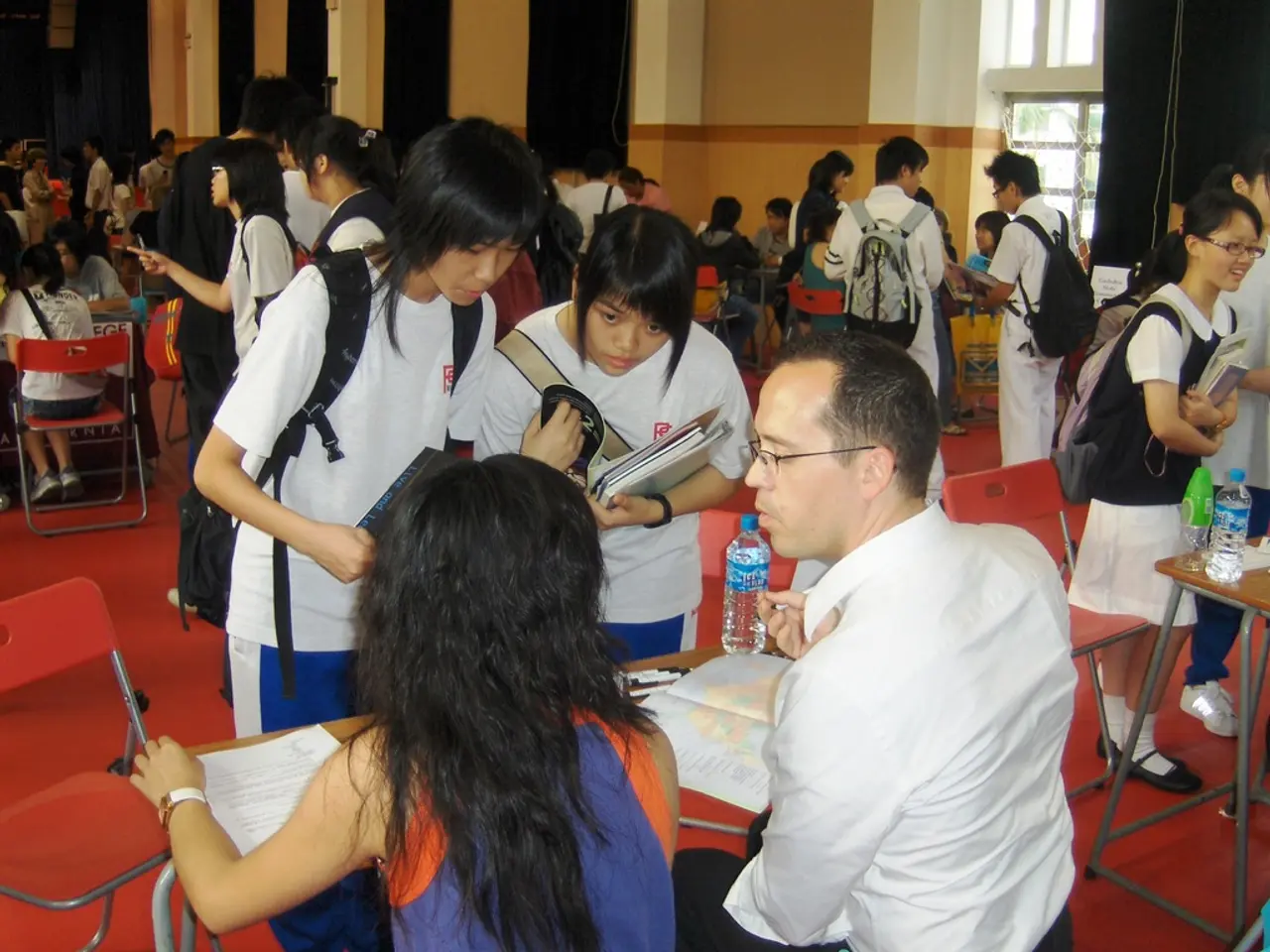Strategies to Minimize Educational Slippage in Students During Summer
Summer break is a time for relaxation and fun, but it's also crucial for maintaining and enhancing the academic growth of children. Here are some effective strategies to prevent summer learning loss, ensuring students return to school with confidence, clarity, and momentum.
Regular Practice of Math and Reading Skills
Consistent engagement with math problems and reading materials throughout the summer is key. This can be through independent study, parental support, or tutoring programs. Research shows that students can lose between 20 and 30 percent of the progress made during the school year due to summer learning loss, particularly in mathematics[1][3].
Fun, Accessible, and Play-based Learning
Summer learning should not mimic traditional school but instead incorporate joyful, interactive activities combining reading, math, and play. Play-based learning supports literacy and problem-solving skills effectively and enhances executive functions like memory and emotional regulation[2].
Structured Summer Tutoring
Affordable summer tutoring services provide personalized instruction that helps students retain and deepen academic skills, boosting readiness for the next school year. This is especially helpful for busy families looking for flexible yet effective options[3].
Goal-setting and Use of Targeted Resources
Setting reading goals, preferably using tools like Lexile measures, can guide families in selecting appropriate books to sustain literacy development. Platforms offering curriculum-aligned digital resources also help maintain progress in reading and math[4][2].
Community and Family Involvement
Participation in programs supported by schools, nonprofits (e.g., UNICEF), and community organizations creates enriching summer environments to prevent academic regression and reduce achievement gaps[2].
High-quality Summer Programs
High-quality summer programs can combine creativity, academics, and personal growth, offering a diverse range of activities such as robotics, arts, languages, or athletics.
Self-directed Learning and Project-based Activities
Encouraging self-directed learning during summer, like allowing students to pursue personal projects from start to finish, can build independence, initiative, and problem-solving ability. Project-based activities bring school subjects into daily life and allow students to plan, create, and solve problems[5].
Technology and Summer Learning
Technology can support learning effectively when used purposefully, such as for reviewing material, practicing new skills, or completing creative projects. Look for educational websites or apps that introduce basic coding, encourage digital storytelling, or support vocabulary and subject review to support continued academic growth and creative exploration.
Social and Emotional Development
Social and emotional development is crucial for managing learning. Summer can provide opportunities for clear routines, family conversations, emotional check-ins, journaling, practicing gratitude, role-playing, and joining group activities that promote teamwork. Our school emphasizes social-emotional learning across all ages, teaching empathy, resilience, and respectful communication[6].
At our school, students learn how to set goals and reflect on their progress, fostering a stronger sense of ownership and purpose. We also focus on digital responsibility and innovation, with students using digital tools to design, research, and collaborate.
By implementing these strategies, we can ensure that students not only maintain their academic skills but also grow and develop in various aspects during the summer break.
[1] Cohen, D. K., & Dorman, M. F. (2018). The Summer Learning Slide: What We Know and What We Can Do. National Summer Learning Association. [2] National Summer Learning Association. (2019). The Power of Summer: How Summer Programs Can Boost Student Achievement and Close Achievement Gaps. [3] Sanders, M. G., & McCabe, D. L. (2006). The impact of summer on achievement: A narrative and meta-analytic review. Review of Educational Research, 76(1), 47-81. [4] National Summer Learning Association. (n.d.). Summer Learning Toolkit. [5] National Summer Learning Association. (n.d.). Project-based Learning. [6] Collaborative for Academic, Social, and Emotional Learning (CASEL). (2020). Core SEL Competencies.
- To maintain academic growth during summer break, students can engage regularly with math problems and reading materials, either independently or through parental support or tutoring programs.
- Summer learning should incorporate fun, interactive activities that combine reading, math, and play, as play-based learning strengthens literacy and problem-solving skills, and enhances memory and emotional regulation.
- Structured summer tutoring services, available at an affordable price, provide personalized instruction and help students retain and deepen academic skills, leading to a readiness for the next school year.
- Goal-setting, utilizing tools like Lexile measures, can help families choose appropriate books for reading that maintain literacy development. By using curriculum-aligned digital resources, students can sustain progress in reading and math.
- Community and family involvement in summer programs supported by schools, nonprofits, and community organizations create enriching environments that prevent academic regression and reduce achievement gaps.
- Self-directed learning and project-based activities, such as allowing students to pursue personal projects from start to finish, can foster independence, initiative, and problem-solving skills. Technology can also support learning by reviewing material, practicing new skills, or completing creative projects, as long as it is used purposefully. Furthermore, social and emotional development, focused on managing learning, can be achieved through structured routines, family conversations, emotional check-ins, journaling, practicing gratitude, role-playing, and joining group activities that promote teamwork.




